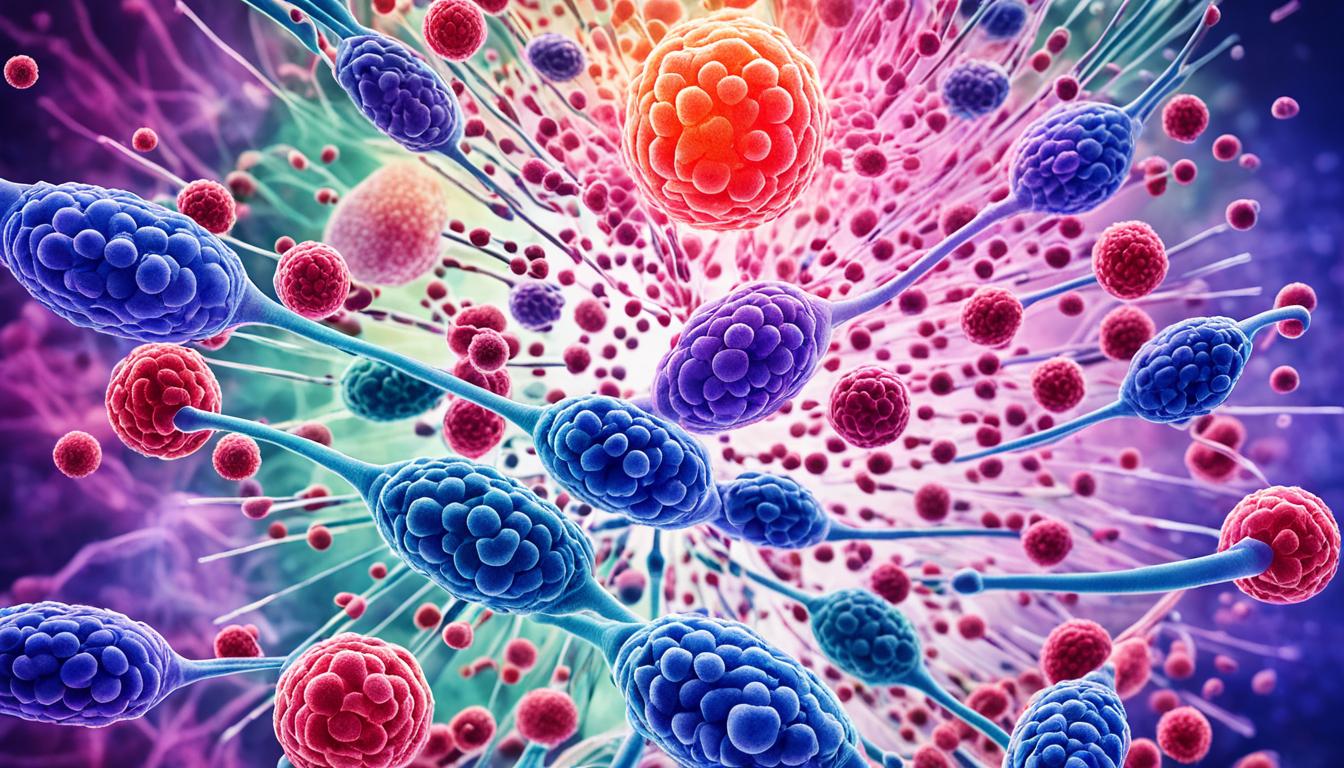Hairy cell leukemia, or HCL, is a rare cancer. It affects the white blood cells, specifically the B cells or B lymphocytes. The B cells look “hairy” under a microscope because of thin projections. This overgrowth of abnormal B cells leads to a build-up of leukemia cells. Thus, it causes symptoms like fatigue, easy bruising, and recurring infections.
The exact cause of HCL remains a mystery. It’s linked to genetic mutations in the B cells, though. This cancer affects older adults, especially males, and grows slowly. Currently, chemotherapy is its main treatment. Yet, healthcare experts are exploring the potential of stem cell therapy for HCL.
Key Takeaways:
- Hairy cell leukemia is a rare cancer of the white blood cells.
- It is characterized by the overproduction of abnormal B cells.
- Symptoms of HCL include fatigue, easy bruising, recurring infections, weight loss, and weakness.
- The exact cause of HCL is still unknown, but genetic mutations in B cells may play a role.
- HCL is more common in older adults, particularly males.
- Treatment options for HCL include chemotherapy and ongoing research on stem cell therapy.
Symptoms and Diagnosis of Hairy Cell Leukemia
Hairy cell leukemia is a rare cancer impacting white blood cells. Early on, it might not show any symptoms. Yet, when these signs show up, they point to the disease’s presence. Knowing and spotting these symptoms is key to getting help early.
Typical signs of hairy cell leukemia are:
- A feeling of fullness in the belly
- Fatigue
- Easy bruising
- Recurring infections
- Weakness
- Unexplained weight loss
If you have these signs a lot, it’s smart to see a doctor. They can check you out to see what’s wrong.
To know if someone has hairy cell leukemia, doctors run tests. These tests try to confirm if you have the disease. They check:
- Blood tests: These look at different types of blood cells, especially B cells.
- Peripheral blood smear: This is looking at your blood under a microscope to find hairy cells.
- Bone marrow biopsy: Doctors might take a bit of your bone marrow to closely check it.
The goal of all these tests is to rule out other diseases. It’s also to make sure the treatment plan is just right.
By getting familiar with hairy cell leukemia’s signs and completing the proper tests, people with this disease can get the right care early. This helps in treating and dealing with the disease better.
Treatment and Stem Cell Therapy for Hairy Cell Leukemia
The main way to treat hairy cell leukemia (HCL) is through chemotherapy. Doctors use drugs like cladribine (Leustatin) and pentostatin (Nipent). These drugs help most patients with HCL get better by getting rid of cancer cells in the blood.
In some cases, doctors might use immunotherapy too. This type of treatment uses drugs like interferon and rituximab (Rituxan). They help the body’s immune system attack the leukemia cells. Although chemotherapy and immunotherapy work well for many, some people might not respond well or their cancer may come back.
Stem cell therapy is a more advanced option for these situations. It includes a procedure where healthy stem cells are placed into the body. These cells then repair the damaged bone marrow and start making healthy blood cells. Stem cell therapy has shown to give better results for HCL and researchers are looking into it more. However, it’s important for patients to keep up with their doctor visits and check-ups. This helps to see how well the treatment is working and if there are any issues.

